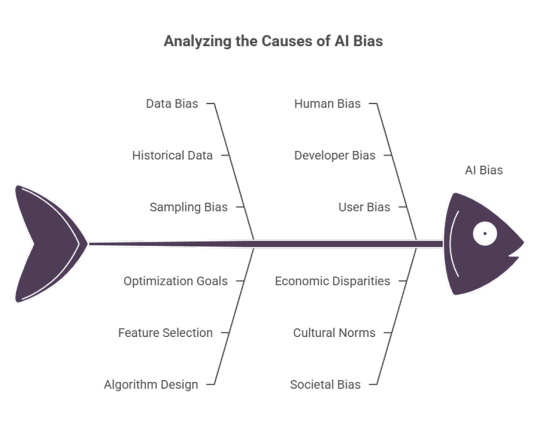#Robot inclusion standard
Explore tagged Tumblr posts
Text
Since the announcement for Super Robot Wars Y, I’ve seen a bit of confused eyebrow-raising at the apparent absence of any Universal Century Gundam shows in the roster, and so far the only Gundam series’ included apparently just being Mobile Fighter G-Gundam and Gundam: The Witch from Mercury. And I had an interesting thought on that:
What if we actually DON’T get any UC Gundam shows in SRW Y because the writers are specifically building a shared narrative for this game around the idea of Earth as abandoned, left behind and exploited by those in the space colonies above?
As a lot of people have pointed out, both G-Gundam and G-Witch actually both share this rather notable flip on the otherwise pretty standard Gundam trope of ‘Space colonies rebelling against the established power of Earth’. In G-Gundam, Earth and its remaining people have been largely abandoned by those in the colonies and has been devastated by decades of being used as the battleground for the Gundam Fights. And in G-Witch, Earth has become the underclass backwater exploited for labor and resources by those in the colonies like the Benerit Group.
What if the reason we’re not seeing any UC Gundam series’ in SRW Y’s roster so far is because basically NONE of their stories really WORK with this background? Like you can’t exactly square Zeta Gundam’s ‘Earth is oppressing the colonies’ narrative with G-Witch’s ‘the colonies are oppressing Earth’ narrative, now can you? And the same goes really MOST other Gundam series’ as well, Wing, SEED*, 00, etc. About the only other Gundam series I could see working here is After War Gundam X, since that show is similarly built around the idea of an Earth that has been devastated by war.
And this is made more interesting when we look at some of the other shows announced for SRW Y, and find they also potentially fit rather nicely into this shared narrative.
Getter Robo Arc is set at the end of the Getter Robo timeline, taking place after years of fighting against the Dinosaur Empire and other threats to humanity, which certainly provides something else to have ravaged the Earth.
And Macross Delta’s inclusion actually potentially fits perfectly into this narrative, as that brings with it the shared Macross backstory of Earth having been devastated by the war with the Zentradi.
Even the inclusion of Aura Battler Dunbine could potentially fit into this narrative, since that series has its character being summoned to another world isekai-style. Meaning that there can be some interesting potential of the fantastical world of Byston Well being used to contrast the devastated and ravaged Earth.
Also, a Super Robot Wars game not including any UC Gundam shows, or having just two Gundam entries in its roster is hardly a new thing either. Super Robot Wars UX, L, Neo, K, even the very well-regarded and fan-favorite J and W (a personal favorite of mine as well) all likewise featured no UC Gundam shows, and most only featured a couple Gundam entries at all.
In fact, considering that the last SRW entry, Super Robot Wars 30 was rather notable for including ONLY Gundam entries set in the Universal Century (outside of DLC anyway), it actually feels a bit fitting that the next entry would feature no UC Gundam shows at all.
*Though funny enough, I could see the new Gundam SEED Freedom movie working in this setting, assuming some pretty major tweaks. That movie is also set after multiple devastating wars and treats most of Earth outside of two small nations as basically an afterthought, with most of the power at this point clearly being held by the colonies, so I think you could make the setting work. Compass in turn could be made into one of multiple ‘peacekeeping’ organizations working with/for the Space Assembly League similar to Cathedra and their Domincus corp. Which would basically necessitate making Kira ‘Jesus’ Yamato and all his friends a LOT more morally ambiguous/complicated in likely a ‘wait, are we the bad guys?’ way. Which I think we can all agree would be pretty fun XD
#srw#super robot wars#super robot wars y#gundam#gundam the witch from mercury#g-witch#g-gundam#mobile fighter g gundam#gundam universal century#getter robo#getter robo arc#macross#macross delta#aura battler dunbine#gundam seed freedom#i might do a more in depth post on why w is one of my all time favorite srw games#certainly in terms of story and universe-blending
46 notes
·
View notes
Text
Democrats on the House Oversight Committee fired off two dozen requests Wednesday morning pressing federal agency leaders for information about plans to install AI software throughout federal agencies amid the ongoing cuts to the government's workforce.
The barrage of inquiries follow recent reporting by WIRED and The Washington Post concerning efforts by Elon Musk’s so-called Department of Government Efficiency (DOGE) to automate tasks with a variety of proprietary AI tools and access sensitive data.
“The American people entrust the federal government with sensitive personal information related to their health, finances, and other biographical information on the basis that this information will not be disclosed or improperly used without their consent,” the requests read, “including through the use of an unapproved and unaccountable third-party AI software.”
The requests, first obtained by WIRED, are signed by Gerald Connolly, a Democratic congressman from Virginia.
The central purpose of the requests is to press the agencies into demonstrating that any potential use of AI is legal and that steps are being taken to safeguard Americans’ private data. The Democrats also want to know whether any use of AI will financially benefit Musk, who founded xAI and whose troubled electric car company, Tesla, is working to pivot toward robotics and AI. The Democrats are further concerned, Connolly says, that Musk could be using his access to sensitive government data for personal enrichment, leveraging the data to “supercharge” his own proprietary AI model, known as Grok.
In the requests, Connolly notes that federal agencies are “bound by multiple statutory requirements in their use of AI software,” pointing chiefly to the Federal Risk and Authorization Management Program, which works to standardize the government’s approach to cloud services and ensure AI-based tools are properly assessed for security risks. He also points to the Advancing American AI Act, which requires federal agencies to “prepare and maintain an inventory of the artificial intelligence use cases of the agency,” as well as “make agency inventories available to the public.”
Documents obtained by WIRED last week show that DOGE operatives have deployed a proprietary chatbot called GSAi to approximately 1,500 federal workers. The GSA oversees federal government properties and supplies information technology services to many agencies.
A memo obtained by WIRED reporters shows employees have been warned against feeding the software any controlled unclassified information. Other agencies, including the departments of Treasury and Health and Human Services, have considered using a chatbot, though not necessarily GSAi, according to documents viewed by WIRED.
WIRED has also reported that the United States Army is currently using software dubbed CamoGPT to scan its records systems for any references to diversity, equity, inclusion, and accessibility. An Army spokesperson confirmed the existence of the tool but declined to provide further information about how the Army plans to use it.
In the requests, Connolly writes that the Department of Education possesses personally identifiable information on more than 43 million people tied to federal student aid programs. “Due to the opaque and frenetic pace at which DOGE seems to be operating,” he writes, “I am deeply concerned that students’, parents’, spouses’, family members’ and all other borrowers’ sensitive information is being handled by secretive members of the DOGE team for unclear purposes and with no safeguards to prevent disclosure or improper, unethical use.” The Washington Post previously reported that DOGE had begun feeding sensitive federal data drawn from record systems at the Department of Education to analyze its spending.
Education secretary Linda McMahon said Tuesday that she was proceeding with plans to fire more than a thousand workers at the department, joining hundreds of others who accepted DOGE “buyouts” last month. The Education Department has lost nearly half of its workforce—the first step, McMahon says, in fully abolishing the agency.
“The use of AI to evaluate sensitive data is fraught with serious hazards beyond improper disclosure,” Connolly writes, warning that “inputs used and the parameters selected for analysis may be flawed, errors may be introduced through the design of the AI software, and staff may misinterpret AI recommendations, among other concerns.”
He adds: “Without clear purpose behind the use of AI, guardrails to ensure appropriate handling of data, and adequate oversight and transparency, the application of AI is dangerous and potentially violates federal law.”
12 notes
·
View notes
Note
Heya there Ein! Question time for you! Have some Meta asks.
(ノ◕ヮ◕)ノ*:・゚✧
For Kurumi
What plot points would change due to the inclusion of your character in canon?
For Kana
What headcanons/theories do you believe fandom would invent about your character?
What controversies/drama would your character incite in fandom?
Yui
What would be the ‘incorrect but wildly popular’ interpretation of your character in fandom?
and for any character of your choosing
What is the wildest crackship you can imagine for your character, whether in-universe or in crossover?
And this one's the last for the fandom OC ask! Thank you for sending this one Lix hehehe That last one was so fun ngl I hope my answer for that is funny enough!
Kurumi: What plot points would change due to the inclusion of your character in canon?
I already answered here! But to add one more, it would be that after Gokudera's debut/focus chapter, the next one would be Kurumi's instead of Yamamoto's or that chapter where they have trouble with this asshole teacher. 🫶✨
Kana: What headcanons/theories do you believe fandom would invent about your character?
I also already answered in the link above too. But I'll give you one more on the house! I feel like there would also be theories that Kana was raised separately from Kurumi for some reason. Each person will come up with different reasons for it that they would connect as to the reason why Kana grew up to have those types of vibes.
Kana: What controversies/drama would your character incite in fandom?
I have an answer for this here too! But of course, more extras for you Lix! 🥳🥳 It's kind of related to my answer to this ask actually, but shipping aside, there will definitely be discourse between how different people would interpret her character. I can see people causing drama and complaining if they see another person who's interpretation of her is on the other side of the spectrum. It would also be guaranteed that there will be those types of people who can't handle morally grey characters, straight up just saying that if you like characters like Kana then you agree with her views and beliefs shown in the story 🤣😭🤣😭🤣😭
Yui: What would be the ‘incorrect but wildly popular’ interpretation of your character in fandom?
I answered this here too! An additional one I can think of is that, I feel like people will just see Yui for whatever he's showing in the surface - a goofy/unserious character obsessed with robots, which ignores the other aspects of his characters and the layers that he has beneath.
Any Character: What is the wildest crackship you can imagine for your character, whether in-universe or in crossover?
LMAOOOOO OK I'LL LIST DOWN THE ONES I CAN REMEMBER SDBFHSVDF MOSTLY FROM MY BROTHER
Bel x Kurumi - Suggested by my brother who loves Varia. In his defense, he said it will be a Prince x Princess ship, which is actually pretty cute...in theory. Bel isn't really your standard shoujo prince, is he? hahaha Though I feel like they'll somehow get along in a strange way if they ever meet in the main story.
Mukuro x Kana - Another one suggested by the same brother, who is also a Mukuro GOAT truther. He said it's because they look like they're the same breed of nasty, and also in consideration of this one secret Kana lore I told him about. I have no counter for that but just for this one certain thing, they'll be each other's haters tbh. One of the reasons why I think he's lowkey trying to convince me to ship them is because he wants more Mukuro screentime in my arts and KHRe 🤣🤣If I somehow get into this ship someday, you can either thank or blame him 👍✨
Enma x Hiyori - Cooked up by my brother again, who also likes Enma. His headcanon is that those bandaids on Enma's face are from when Hiyori keeps treating him whenever he trips or get beat up by bullies. Lowkey cute????? I should ask for his other ships, though it would definitely involve Varia, Kokuyo Gang or Simon Family.
Hibari x Ryuuka - Something that crossed my mind when thinking of silly scenarios where TYL Hibari gets caught up in a time slip. Of course, this is crack because they live 200+ years away from each other dfbhjvfshdf I even have an old rough sketch for the scenario, though I didn't really finish, where he thought Ryuuka is Kana? He's very ready to fight her, as usual, but this one is always cooped up in her lab. Ryuuka probably thinks he's Alaude or Alaude's relative. Anyway, I didn't really think that deep for this.

#khr#khre#khr oc#oc#oc ask#einart#queue i can't put into words#sjbjhsvfhsvdfhds#my brother lowkey a crackship genius#also that sketch is so old lmaoo
11 notes
·
View notes
Text
legit hate how they shoehorned mac being gay when he was always such a sleazy hetero(bi?) guy and then you have their viewers trying to rationalize that by saying that he went hardcore to one side to repress that other side, yall really don’t understand how gay men work, instead of admitting the writers wrote themselves into a corner before they realized they wanted to change a character for whatever reasons, shock value/inclusion ig? And rationalizing that writers just make up shit as they go along, yall come up with even more convoluted and downright homophobic reasons to believe that this change is somehow realistic or natural and not just a total retcon to seem less homophobic after the gay jokes later on they made about him but only end up perpetuating homophobic tropes and misrepresentation of gay men and gay male characters. Gay men aren’t robots and that mf was doing straight when nobody’s around
You know there’s a double standard when if the roles were reversed you’d never see people believe a straight man acting towards men and go as far as mac does in the earlier seasons to be an actual believable scenario, straight writers writing gay male characters has really warped yalls mind.
7 notes
·
View notes
Text
Bias in AI: The Glitch That Hurts Real People
Yo, Tumblr crew! Let’s chat about something wild: AI bias. Let’s discuss about AI’s everywhere—picking Netflix binge, powering self-driving cars, even deciding who will gets a job interview? It’s super cool, but here’s the tea: AI can mess up by favouring some people over others, and that’s a big deal. Let’s break down what’s going on, why it sucks, and how we can make things better.
What’s AI Bias?

Let’s imagine that AI is supposed to be a neutral, super-smart robot brain, right? But sometimes it’s more like that friend who picks favorites without even realizing it. AI bias is enables the system to screw up by treating certain groups unfairly—like giving dudes an edge in job applications or struggling to recognize faces of people with darker skin. It’s not the AI being a mis operational model; it’s just doing what it was taught, and sometimes its teaching is flawed.
AI bias and its insights
Shady Data: AI learns from data humans feed it. If that data’s from a world where, say, most tech hires were guys, the AI might “learn” to pick guys over others.
Human Oof Moments: People build AI, and we’re not perfect. Our blind spots—are thinking about how different groups are affected—can end up in the code.
Bad Design Choices: AI’s built can accidentally lean toward certain outcomes, like prioritizing stuff that seems “normal” but actually excludes people.
Why’s This a Big Deal?
A few years back, a big company ditched an AI hiring tool because it was rejecting women’s résumés. Yikes.
Facial recognition tech has messed up by misidentifying Black and Brown folks way more than white folks, even leading to wrongful arrests.
Ever notice job ads for high-paying gigs popping up more for guys?
This isn’t just a tech glitch—it’s a fairness issue. If AI keeps amplifying the same old inequalities, it’s not just a bug; it’s a system that’s letting down entire communities.
Where’s the Bias Coming From?
Old-School Data: If the data AI’s trained on comes from a world with unfair patterns (like, uh, ours), it’ll keep those patterns going. For example, if loan records show certain groups got denied more, AI might keep denying them too.
Not Enough Voices: If the folks building AI all come from similar backgrounds, they might miss how their tech affects different people. More diversity in the room = fewer blind spots.
Vicious Cycles: AI can get stuck in a loop. If it picks certain people for jobs, and only those people get hired, the data it gets next time just doubles down on the same bias.
Okay, How Do We Fix This?
There are ways to make things fairer, and it’s totally doable if we put in the work.
Mix Up the Data: Feed AI data that actually represents everyone—different races, genders, backgrounds.
Be Open About It: Companies need to spill the beans on how their AI works. No more hiding behind “it’s complicated.”
Get Diverse Teams: Bring in people from all walks of life to build AI. They’ll spot issues others might miss and make tech that works for everyone.
Keep Testing: Check AI systems regularly to catch any unfair patterns. If something’s off, tweak it until it’s right.
Set Some Ground Rules: Make ethical standards a must for AI. Fairness and accountability should be non-negotiable.
What Can we Do?
Spread the Word: Talk about AI bias! Share posts, write your own, or just chat with friends about it. Awareness is power.
Call It Out: If you see a company using shady AI, ask questions. Hit them up on social media and demand transparency.
Support the Good Stuff: Back projects and people working on fair, inclusive tech. Think open-source AI or groups pushing for ethical standards.
Let’s Dream Up a Better AI
AI’s got so much potential—think better healthcare, smarter schools, or even tackling climate change. By using diverse data, building inclusive teams, and keeping companies honest.
#AI #TechForGood #BiasInTech #MakeItFair #InclusiveFuture
@sruniversity
2 notes
·
View notes
Text
Real Estate Outlook 2025: Transforming India’s Property Sector

As we step into 2025, India’s real estate sector remains a cornerstone of economic growth, poised to significantly contribute to the nation’s ambitious $5 trillion economy goal. Despite global challenges, the sector showcases resilience fueled by urbanization, increasing disposable incomes, and a growing emphasis on sustainable living. This year promises transformative trends, unlocking opportunities for growth and innovation while solidifying the sector’s role as a key economic driver.
Thriving Real Estate Markets in 2025India's metro cities continue to dominate the real estate landscape, with Mumbai, Bengaluru, and Hyderabad taking the lead in residential and commercial segments. These cities attract global investors due to their economic vibrancy and robust demand. The luxury real estate market, in particular, has experienced a remarkable surge, nearly tripling in size since 2018. Meanwhile, Tier 2 and Tier 3 cities like Pune, Ahmedabad, and Kochi are gaining traction, driven by improved infrastructure and government initiatives. However, metro cities remain the epicenter of real estate development.
Future Growth in Real Estate (2025-2030)India’s GDP is projected to grow from $3 trillion in FY22 to $7-8 trillion by FY30, with real estate’s contribution to GDP expected to double to 13-15%. Rising urban homeownership, especially among Millennials, is a significant driver. Increased private equity investments in residential, industrial, and logistics sectors are further propelling growth. By 2030, real estate is anticipated to contribute $1 trillion to the Indian economy, led by segments such as luxury housing, senior living, and serviced apartments. The commercial real estate market is also thriving, with IT parks and flexible workspaces seeing unprecedented demand.
Key Trends Shaping Real Estate in 2025
Integrated TownshipsHolistic developments blending residential, commercial, and recreational spaces are gaining popularity. These townships offer convenience and a superior lifestyle.
SustainabilityGreen buildings are on the rise, with eco-friendly materials and energy-efficient designs becoming standard. By 2025, 30% of new projects are expected to hold green certifications, reflecting the industry’s commitment to environmental responsibility.
Urban RedevelopmentRevamping dense urban spaces to modernize infrastructure while preserving the character of older neighborhoods is becoming critical.
Second Homes and PlotsDemand for second homes in scenic locations like Alibaug, Lonavala, and Goa is growing, driven by wellness and work-life balance. The flexibility of owning customizable plots is also appealing to buyers.
Technology-Driven InnovationAdvancements in AI, robotics, and 3D printing are revolutionizing construction, making it more efficient, cost-effective, and sustainable. Virtual walkthroughs using AR and VR are enhancing the buyer experience.
Real Estate: A Catalyst for ProgressThe future of India’s real estate sector is bright, thanks to its demographic advantages, regulatory reforms, and infrastructure investments. As we move forward, innovation, sustainability, and inclusivity will be critical to achieving long-term growth. Ensuring affordability and accessibility will play a pivotal role in shaping a sector that not only thrives but also contributes to India's economic and social progress.Let’s Discuss the FutureWhat are your thoughts on these trends? Share your perspective in the comments below and help shape the conversation around the future of real estate in India!
5 notes
·
View notes
Text
Thailand SMART Visa
The Thailand SMART Visa is a specialized program designed to attract global talent, investors, executives, and entrepreneurs to support Thailand’s transition to an innovation-driven economy under the Thailand 4.0 initiative. Introduced in 2018, the SMART Visa program offers unique benefits such as long-term residency, streamlined processes, and enhanced rights for visa holders and their families.
1. Objectives of the SMART Visa
Support Economic Growth:
Encourage investments and innovations in targeted industries critical to Thailand’s economic development.
Simplify Visa Processes:
Reduce bureaucratic hurdles, providing an easier route to residency for skilled professionals and investors.
Promote Innovation:
Attract expertise and investments in industries aligned with Thailand’s long-term economic goals.
2. Categories of the SMART Visa
2.1 SMART T (Talent)
Eligibility:
Highly skilled professionals in targeted industries such as robotics, biotechnology, and digital technology.
Minimum monthly salary: 100,000 THB.
A bachelor’s degree with at least 10 years of experience in the relevant field.
Benefits:
Work permit exemption and up to 4 years of visa validity.
2.2 SMART I (Investor)
Eligibility:
Investors contributing a minimum of 20 million THB to businesses or projects in targeted sectors.
Benefits:
Multiple-entry visa with up to 4 years of validity for investors and their families.
2.3 SMART E (Executive)
Eligibility:
Senior executives in companies operating within targeted industries.
Minimum monthly salary: 200,000 THB.
At least 10 years of relevant professional experience.
Benefits:
Permission to work and reside in Thailand with their dependents.
2.4 SMART S (Startup)
Eligibility:
Entrepreneurs establishing startups in Thailand within targeted sectors.
Must join government-endorsed incubation or accelerator programs.
Financial requirement: Savings of 600,000 THB (1 year).
Benefits:
1-year visa with potential for renewal and business setup support.
2.5 SMART O (Other)
Eligibility:
Dependents of SMART Visa holders, including spouses and children.
Benefits:
Extended residency rights and, in some cases, permission to work in Thailand.
3. Targeted Industries
The SMART Visa program supports Thailand’s economic transformation by focusing on industries under the Thailand 4.0 policy, including:
Next-generation automotive.
Smart electronics.
Biochemical and biotechnology.
Food innovation.
Robotics.
Digital technology.
Renewable energy.
4. Benefits of the SMART Visa
Long-Term Residency:
Valid for up to 4 years, depending on the visa category.
Work Permit Exemption:
No separate work permit is required for SMART Visa holders.
Family Inclusion:
Dependents, such as spouses and children, can enjoy long-term residency and work rights in some cases.
Streamlined Immigration Processes:
Eliminates the need for 90-day reporting, replacing it with annual reporting.
Multiple-Entry Privileges:
Unlimited entries into Thailand during the visa validity period.
5. Application Process
Step 1: Eligibility Check
Submit a pre-application form online through the SMART Visa Unit for initial screening.
Step 2: Document Submission
Provide documents such as:
Employment contracts.
Proof of qualifications and experience.
Financial records and business plans (for investors and startups).
Step 3: Approval by Relevant Authorities
The Board of Investment (BOI) and other government agencies review the application, typically within 30 business days.
Step 4: Visa Issuance
Once approved, applicants can obtain the SMART Visa at Thai embassies, consulates, or local immigration offices.
6. Challenges and Considerations
High Eligibility Standards:
Financial thresholds and professional requirements may exclude applicants without substantial experience or capital.
Industry-Specific Restrictions:
The SMART Visa is available only to individuals contributing to targeted sectors.
Periodic Compliance Checks:
Visa holders are subject to regular reviews to ensure continued eligibility.
Conclusion
The Thailand SMART Visa program provides an efficient and beneficial route for skilled professionals, investors, and entrepreneurs seeking to work and reside in Thailand. Its streamlined process, extended visa duration, and family-friendly benefits make it an attractive option for global talent and investors. However, the program’s strict eligibility criteria necessitate careful preparation and planning to ensure successful application and compliance.
#thailand#lawyers#immigration#immigration in thailand#immigration lawyers in thailand#thai visa#thai#visa#smartvisa#smartvisainthailand
2 notes
·
View notes
Text
Top 5 Benefits of Using AI to Human Text Converter Tools
The evolution of AI-generated content has reshaped the way we approach writing. From drafting essays to generating blog posts, AI has opened up countless opportunities. However, AI content may lack the natural flow that resonates with human readers. This is where tools like the AI to Human Text Converter come in, transforming AI-generated text into human-like language. Let’s explore the top five benefits of using AI to Human Text Converter tools.
1. Enhanced Readability and Engagement
AI-generated content can sometimes sound robotic and lack the nuances of human expression. AI to Human Text Converter tools refine this content, ensuring it reads smoothly and is relatable. This makes it perfect for websites, academic papers, and blogs, where readability and engagement are crucial. When readers find content relatable, they’re more likely to stay on the page, enhancing user experience and engagement.
2. SEO Optimization
Humanized content performs better in search engines. AI to Human Text Converters like AI to Human Text Converter optimize AI-generated text to meet SEO standards, helping websites rank higher on Google. Search engines reward content that is natural, relevant, and engaging. By converting AI text into human-like language, you’re also ensuring that your content aligns with Google’s E-A-T (Expertise, Authoritativeness, Trustworthiness) standards, leading to a boost in SEO rankings.
3. Bypass AI Detection
Many websites and platforms are now equipped with AI-detection tools. Using an AI to Human Text Converter helps your content bypass these detectors, making it appear authentically human-written. For students, bloggers, or professionals using AI-generated content, this ensures the text sounds original and relatable, without setting off alarms on content-checking platforms.
4. Multilingual Support and Accessibility
Tools like AI to Human Text Converter offer multilingual support, making it easy to convert AI-generated text into human-like language in various languages. This is a powerful feature for businesses or individuals aiming to reach a diverse audience. When content resonates across languages, it makes your site more inclusive and enhances your global reach.
5. Free and Unlimited Usage
Many AI to Human Text Converter tools, including AI to Human Text Converter, offer their services for free with unlimited use. This means you can humanize as much AI content as needed without subscription fees. Whether you’re a student, writer, or business professional, this tool is both cost-effective and efficient, giving you access to top-quality, human-like content at no expense.
3 notes
·
View notes
Text
Blog Post 10/3
How does race online differ from race in the real world, and what does this mean for digital identity?
Race online is different than in the real world because its more common online world as there are no real faces behind the screen. No one questions each other because they use online games and screens to their advantage to be racist and not be told anything because of how common it is. Since its common those that know it is wrong might not speak up because they might be attacked by those that are racist. In the real world those that are racist are always judged by their the words they speak and even shame them for the way they treat others. They are able to confront in the real world more easily because its face-to-face. Digital Identity can vary but I do beleive that those that are online change the way they are to be either a fake version or real version of themselves. Theres no inbetween because they have that choice and I feel like its a either a all or nothing situation.
How do Asian characters in media reinforce or challenge stereotypes, and how does this affect global perceptions of Asians?
In The Revenge of the Yellow-Faced Cyborg Terminator, Jeffery A. Ow explains how Asian characters often encourage harmful racail sterotypes. These sterotypes are negative assumtions of Asians and can be very dehumanized because they compare them to robots. The impact of these sterotypes that still influences global perceptions and makes them out to be complicated people that are perfect in some ways? These views still affect Asians because they are put these standards that others just have of them because thats what "Asians are" which is so unfair to be put on this standard that just came from a stereotype.
How does "ludo-orientalism" explain the link between race and gaming, and how might games influence how players view race?
Ludo-orientalism is a new word that I found interesting which refers to how video games incorporate sterotypes in exotic and mysterious games. These games use racial or markers to create a sterotypical character in the game or enviroments which is seen by those who play the video games. They set these sterotypes as normal and shape how the players view of racism and sterotypes towards them. It can start to persaude biased views of these groups and start to show in the real world. These games and media play a huge role in the real world as more and more children are using social media and can start to change the way they think as normal behavior.
How do online spaces, media, and games both reinforce and change ideas about race, and what can be done to improve representation?
Online spaces both reinforce and reshape ideas about race. In online spaces, in Race in Cyberspace, users can mask or manipulate racial identities, which can challenge traditional views but also lead to racism and stereotypes. People may experiment with identity, but these environments often carry over real-world biases limiting true racial freedom. As these are views of the creator of the game. Jeffery A. Ow’s The Revenge of the Yellow-Faced Cyborg Terminator highlights how media continues to reinforce stereotypes about Asian people. Despite some progress in diverse representation, harmful depictions of race persist in movies and TV, which shapes how audiences view race globally as common. The concept of "ludo-orientalism" in the gamification of race shows how video games often use and reinforce racial stereotypes. These simplified depictions influence how players engage with race in both the virtual world and reality, sometimes reinforcing negative ideas. To improve representation, digital spaces need conscious efforts to include diverse voices and stories, accurately representing different cultures and races. This requires challenging stereotypes, promoting authentic narratives, and a more inclusive environment in cyberspace environments.
3 notes
·
View notes
Text
For us today, it is still difficult to imagine a future society in which paid labor is not the be-all and end-all of our existence. But the inability to imagine a world in which things are different is only evidence of a poor imagination, not of the impossibility of change. In the 1950s we couldn’t conceive that the advent of refrigerators, vacuum cleaners, and, above all, washing machines, would help prompt women to enter the workplace in record numbers, and yet they did. Nevertheless, it is not technology itself that determines the course of history. In the end, it is we humans who decide how we want to shape our destiny. The scenario of radical inequality that is taking shape in the U.S. is not our only option. The alternative is that at some point during this century, we reject the dogma that you have to work for a living. The richer we as a society become, the less effectively the labor market will be at distributing prosperity. If we want to hold onto the blessings of technology, ultimately there’s only one choice left, and that’s redistribution. Massive redistribution. Redistribution of money (basic income), time (a shorter working week), taxation (on capital instead of labor), and, of course, of robots. As far back as the 19th century, Oscar Wilde looked forward to the day when everybody would benefit from intelligent machines that were “the property of all.�� However, technological progress may make a society more prosperous in aggregate, but there’s no economic law that says everyone will benefit. Not long ago, the French economist Thomas Piketty had people up in arms with his contention that if we continue down our current path we’ll soon find ourselves back in the rentier society of the Gilded Age. People who owned capital (stocks, houses, machines) enjoyed a much higher standard of living than folks who merely worked hard. For hundreds of years the return on capital was 4–5%, while annual economic growth lagged behind at under 2%. Barring a resurgence of strong, inclusive growth (rather unlikely), high taxation on capital (equally improbable), or World War III (let’s hope not), inequality could develop to frightening proportions once again. All the standard options – more schooling, regulation, austerity – will be a drop in the bucket. In the end, the only solution is a worldwide, progressive tax on wealth, says Professor Piketty, though he acknowledges this is merely a “useful utopia.” And yet, the future is not carved in stone. All throughout history, the march toward equality has always been steeped in politics. If a law of common progress fails to manifest itself of its own accord, there is nothing to stop us from enacting it ourselves. Indeed, the absence of such a law may well imperil the free market itself. “We have to save capitalism from the capitalists,” Piketty concludes.
Rutger Bregman, Utopia For Realists: And How We Can Get There
6 notes
·
View notes
Text
Artificial intelligence
Computerkeeda
AI is more than just a catchphrase; it’s a driving force behind a significant shift in the way we live. Artificial intelligence is influencing everything, from industry to our moral standards. Let us examine the ramifications of artificial intelligence today, avoiding technical jargon. The labor economy is about to change because of AI. Automation may make certain jobs obsolete, but it also opens up new possibilities. Imagine a society in which routine jobs are mechanized, allowing people to be more innovative and creative. But this change necessitates a change in training and abilities. As workers adjust to rapidly changing technological environments, lifelong learning will become the standard. Our day-to-day existence is also changing. We’re just getting started with smart homes, customized services, and cutting-edge healthcare. The ease with which these advancements bring about raises the question of how to reconcile efficiency with the preservation of human touch and connection. The development of AI raises important moral conundrums. Privacy is a serious issue. Since data is the foundation of contemporary technology, how can we make sure that our personal data is secure? Developing strong frameworks that protect privacy without impeding innovation is the difficult part. Fairness and bias are equally urgent problems. Because AI systems are frequently taught based on historical data, preexisting biases may be reinforced. Constant attention to detail and a dedication to inclusion are necessary to guarantee that these systems are just and equal. Accountability is yet another intricate matter. Who has the responsibility for decisions made by an AI-driven system? The AI itself, or its designers and users? In order to increase confidence in these systems, it is imperative to establish distinct lines of responsibility. The emergence of AI compels us to reexamine basic philosophical issues. What does intelligence really mean? Are robots only copying human behavior, or are they capable of true consciousness? These inquiries put our conceptions of awareness and intellect to the test and force us to carefully consider what it is that makes us human. Making decisions is an additional topic of interest. Emotions, morality, and intuition are frequently factors in human decision-making. What is the comparison between choices made by machines? Can we put our confidence in robots to make financial, legal, and healthcare decisions? Investigating these issues can yield important information about how people and robots will interact in the future. We can only hypothesize about how society may change in the future as a result of AI. Will we see a dystopia in which humankind is controlled by its own inventions or a paradise in which technology improves every aspect of our lives? It is essential to be aware and involved in order to navigate this unpredictable future. We can better prepare for the changes that artificial intelligence (AI) will bring about and make sure that technology works for mankind rather than against it by being aware of the wider implications of AI.
1 note
·
View note
Text










SHOKUGAN MODELING PROJECT SR-X
Saying nothing of its final quality, this is probably the scummiest release for a model I have ever seen. So, R-1 and R-Gun were both standard, mass produced releases, sold together (remember this, it'll be important later). Now, you'd think with that being the case, and their sizes, that R-2 and R-3 would both be separate mass releases, but they weren't. They were instead both a massively expensive P-Bandai release. And to top it off, many of its effect parts, alternate hands, and accessories came in another additional P-Bandai set, which also came with R-Gun's railgun parts. And SR-X only uses R-Gun with the railgun parts. So if you want an accurate R-Gun to go with your SR-X, you also need that third set, and you will own R-Gun at this point since it comes with R-1.
So to summarize, R-1 and R-Gun were a mass release, R-2 and R-3 were a P-Bandai release, and completed R-Gun is a different P-Bandai release. Really scummy way of draining someone's pockets.




R-1: The most standard robot of the set, it has a decent accessory pool, storage for all of its weapons on its person, and a vehicle mode. The additional joints in the shoulder parts allow for a wide range of movement that isn't impeded by anything transformation/combination related (in fact, it may be improved). The jet mode is sadly not that great (I'm pretty sure I've gotten the arms crossed every time I've transformed it), but I appreciate its inclusion.




R-2 Powered: For such a bulky bot, R-2 has pretty decent posability. While its legs are strange to work with at first because of all its transformation parts, they do have good range. The additional Powered armor parts also don't get in the way or impede movement or balance much at all. It's probably my favorite of the set.




R-3 Powered: It's so strange that most of R-3's accessories are for its base form. R-3 without its Powered upgrade is very simple to construct, but decently posable, if a little tricky at the hips, whereas the Powered parts are the most complicated part of the entire build.




R-Gun: R-Gun is very similar to R-1 in that it's a very posable with a lot of accessories and has a transformation to it. Unlike R-1, it's transformation is a lot more solid and doesn't require you to take it apart (apart from the railguns). I understand why those two were packaged together, even if the non-inclusion of the railguns still rubs me the wrong way.

SR-X: And the reason we're all here: the SR-X. It is literally the largest model kit I have ever built, standing around 14in/35cm. Despite being an enormous combination, it is extremely solid. I'm able to pick it up and move it around without the fear of it falling apart. It's also very posable, with multiple joints in the shoulders, two waist joints, very good ankles, and many more.
And with the accessory set, it's able to replicate, I believe, every finisher is has in the game. Giant sword, using R-Gun, glowy fists, leg missiles, goofy eye beams, its jump kick. You can even remove the front portion of the eye beam and place it on a pair of included glasses if you're feeling particularly sporty that day.

It does require a few adapters in the torso, and in the hips if you don't use the stronger replacement ones (which I did), but it was overall a very fun build, and putting it together was an interesting process in and of itself.
The Bad: In total, across all 3 releases, and including shipping, I spent around $500 on this set. And while I think this is a great model kit, I would never recommend someone drop that on this thing. I think maybe you could get away with half that? But not half a grand.
It doesn't help that there's technically a better, easier to obtain option. There was a release from RIOBOT last year that's a bit more expensive (around $650?), but does all the same stuff and a bit more, comes preassembled, is made of higher quality materials, etc. If you were going to go for this, I'd say just save up a bit more and get that one. (Although, looking at its specs, this one might be ever so slightly taller O_O)
The Details: I went pretty easy on this one (it is massive, afterall). I did some basic panel lining and used the included stickers. There were a few left over for R-3 when I finished that I still don't know where they go...
Overall, the SR-X is a ridiculous model kit on many levels, including its price tag, but other than that one I'd say they're all positives. I can't recommend it, but if you have a lot of money burning a hole in your pocket, there are worse things to spend it on. Just maybe don't buy them all at once.

#Super Robot Wars#Super Robot Wars OG#SR-X#R-1#R-2 Powered#R-3 Powered#R-Gun#Shokugan Modeling Project#SMP#SRW#Review#Model Kit#Super Robot
5 notes
·
View notes
Text
Human Services Software Market Size, Dynamics, Trends & Future Growth Path
Global Human Services Software Market Overview The Global Human Services Software Market is experiencing significant growth, driven by increased demand for digital transformation in public welfare, social services, and non-profit organizations. As of 2025, the market is estimated to be valued at USD 9.3 billion, with a projected CAGR of 11.4% from 2025 to 2032. The adoption of cloud-based case management systems, predictive analytics, and AI-driven platforms is enhancing efficiency in service delivery and resource allocation. Governments and NGOs are increasingly investing in robust human services platforms to streamline workflows, ensure compliance, and improve client engagement across multiple touchpoints. Factors such as the growing focus on outcome-based service models, the need for scalable infrastructure, and rising investments in digital inclusion are contributing to market expansion. The integration of human services software with enterprise resource planning (ERP) systems and customer relationship management (CRM) tools is further driving operational effectiveness. Global Human Services Software Market Dynamics The market dynamics are shaped by several drivers, restraints, and opportunities. Among the primary market drivers are the increasing need for efficient case coordination, data centralization, and regulatory compliance. Rising awareness of mental health services, child welfare programs, and community support networks is accelerating the demand for intelligent software platforms. However, market restraints include high initial implementation costs, concerns over data privacy, and the digital divide in under-resourced regions. Complex legacy systems and lack of interoperability also pose challenges for organizations transitioning to digital platforms. Significant opportunities lie in the growing use of artificial intelligence and machine learning to deliver personalized care plans and early intervention strategies. Additionally, the increased adoption of mobile applications and self-service portals is enhancing user experience and accessibility. The role of technology in transforming human services delivery is profound, enabling real-time collaboration and automated workflows. Regulatory compliance with standards such as HIPAA and GDPR is prompting software providers to implement robust security features. Sustainability is also becoming a focal point, as software solutions now incorporate ESG metrics, social impact measurement tools, and eco-conscious data centers. Download Full PDF Sample Copy of Global Human Services Software Market Report @ https://www.verifiedmarketresearch.com/download-sample?rid=383574&utm_source=PR-News&utm_medium=365 Global Human Services Software Market Trends and Innovations The industry is witnessing significant trends and innovations such as the integration of AI for behavioral pattern recognition and predictive modeling in client management. Cloud-native platforms with low-code/no-code configurations are enabling faster deployments and customization for various service models. Emerging technologies such as natural language processing (NLP) and robotic process automation (RPA) are optimizing administrative tasks and reducing manual errors. Strategic collaborations between software vendors, government agencies, and nonprofit organizations are driving joint innovation and scalable solutions. Global Human Services Software Market Challenges and Solutions Key challenges include integration difficulties with existing legacy systems, the shortage of skilled IT personnel in the public sector, and budgetary constraints. Additionally, supply chain issues for hardware dependencies in on-premise deployments and pricing pressures in competitive markets can hinder adoption. To address these issues, vendors are offering subscription-based pricing models, robust training modules, and implementation support services. Cloud-based deployment models are reducing infrastructure costs and simplifying scalability.
Enhanced API capabilities and interoperability frameworks are being developed to ensure smoother system integration. Global Human Services Software Market Future Outlook The future of the human services software market appears promising, with expectations to surpass USD 18.7 billion by 2032. The growth will be largely fueled by increased public-private partnerships, ongoing digitization of social programs, and the incorporation of data analytics to drive informed decision-making. As software platforms become more intuitive and user-friendly, even small organizations are expected to leverage these solutions to optimize service delivery. The focus will likely shift toward human-centered design, data interoperability, and outcome-driven service planning, making digital human services systems an integral part of social infrastructure globally. Global Human Services Software Market Competitive Landscape The Global Human Services Software Market competitive landscape is characterized by intense rivalry among key players striving to gain market share through innovation, strategic partnerships, and expansion initiatives. Companies in this market vary from established global leaders to emerging regional firms, all competing on parameters such as product quality, pricing, technology, and customer service. Continuous investments in research and development, along with a focus on sustainability and digital transformation, are common strategies. Mergers and acquisitions further intensify the competition, allowing companies to broaden their portfolios and geographic presence. Market dynamics are influenced by evolving consumer preferences, regulatory frameworks, and technological advancements. Overall, the competitive environment fosters innovation and drives continuous improvement across the Global Human Services Software Market ecosystem. Get Discount On The Purchase Of This Report @ https://www.verifiedmarketresearch.com/ask-for-discount?rid=383574&utm_source=PR-News&utm_medium=365 Global Human Services Software Market Segmentation Analysis The Global Human Services Software Market segmentation analysis categorizes the market based on key parameters such as product type, application, end-user, and region. This approach helps identify specific consumer needs, preferences, and purchasing behavior across different segments. By analyzing each segment, companies can tailor their strategies to target high-growth areas, optimize resource allocation, and improve customer engagement. Product-based segmentation highlights variations in offerings, while application and end-user segmentation reveal usage patterns across industries or demographics. Regional segmentation uncovers geographical trends and market potential in emerging and developed areas. This comprehensive analysis enables stakeholders to make informed decisions, enhance competitive positioning, and capture new opportunities. Ultimately, segmentation serves as a critical tool for driving focused marketing, innovation, and strategic growth within the Global Human Services Software Market. Global Human Services Software Market, By Type Global Human Services Software Market, By Application Global Human Services Software Market, By End User Global Human Services Software Market, By Geography • North America• Europe• Asia Pacific• Latin America• Middle East and Africa For More Information or Query, Visit @ https://www.verifiedmarketresearch.com/product/human-services-software-market/ About Us: Verified Market Research Verified Market Research is a leading Global Research and Consulting firm servicing over 5000+ global clients. We provide advanced analytical research solutions while offering information-enriched research studies. We also offer insights into strategic and growth analyses and data necessary to achieve corporate goals and critical revenue decisions. Our 250 Analysts and SMEs offer a high level of expertise in data collection and governance using industrial techniques to collect and analyze data on more than 25,000 high-impact and niche markets.
Our analysts are trained to combine modern data collection techniques, superior research methodology, expertise, and years of collective experience to produce informative and accurate research. Contact us: Mr. Edwyne Fernandes US: +1 (650)-781-4080 US Toll-Free: +1 (800)-782-1768 Website: https://www.verifiedmarketresearch.com/ Top Trending Reports https://www.verifiedmarketresearch.com/ko/product/europe-wheat-market/ https://www.verifiedmarketresearch.com/ko/product/southeast-asia-plastics-market/ https://www.verifiedmarketresearch.com/ko/product/south-america-thermoplastic-elastomers-market/ https://www.verifiedmarketresearch.com/ko/product/us-entry-door-market/ https://www.verifiedmarketresearch.com/ko/product/indian-spinal-surgery-devices-market/
0 notes
Text
Choosing Between CBSE Schools Near Baner Pune
In the competitive world of education, CBSE continues to be one of the most preferred boards across India. For families in Pune, particularly those residing in the western parts, there’s a rising interest in CBSE schools near Baner Pune. MIS International is one such institution that not only aligns with the board’s curriculum but goes above and beyond to provide holistic development.
As one of the reputed CBSE schools near Baner Pune, MIS has a structured academic framework integrated with modern teaching aids. From robotics to public speaking and fine arts, the school provides various enrichment opportunities that enhance learning beyond textbooks. The school also promotes critical thinking, practical exposure, and inclusive classrooms that foster diverse skill sets.
Parents choosing CBSE for its rigor and national relevance can rest assured that MIS aligns with these standards. With a clean and tech-enabled campus, trained staff, and a nurturing environment, MIS has earned its place among the top CBSE schools near Baner Pune.
0 notes
Text
How AI is Transforming SEO: What Every Marketer Must Know
One game changer distinguishes itself more than any other in the constantly changing field of digital marketing: artificial intelligence (AI). SEO is no longer only about keywords as consumer behavior changes and search engines get more intelligent. AI is converting SEO from a rules based approach to a smart, dynamic subject matter, and every marketer must change.
Whether you're a novice in a digital marketing course in Gurgaon or a professional managing campaigns, knowing how artificial intelligence transforms SEO in 2025 is essential for your development.
1. From Keywords to User Intent: AI Has Changed the Game
To understand user intent, modern search engines such Google now depend much on natural language processing (NLP) and machine learning. Rather than merely the actual words, algorithms like Google BERT and MUM examine the context of a search question.
This implies SEO is now about producing useful, contextually appropriate content that addresses genuine consumer questions rather than about filling particular keywords such as "digital marketing course in Gurugram".
Google could show results including phrases like "top rated digital marketing courses in Gurgaon" or "advanced digital marketing course" even if the precise phrase isn't used, such as if someone looks for "best digital marketing institutions in Gurgaon."
2. AI-Powered Content Creation: A Blessing or a Risk?
How marketers create content is being changed by AI tools including ChatGPT, Jasper, and Copy.ai. Still, depending totally on them would be dangerous.
Smart SEO professionals are blending AI-generated drafts with human insight. This method guarantees originality and value while also increasing output. Additionally, tools like AI content detectors are becoming more stringent, punishing only automated, robotic writing.
This is why leading platforms, such as Digital CourseAI, emphasize content strategy in their digital marketing classes online, helping students create SEO-optimized yet human-centric content.
3. AI and Predictive SEO: Ranking Before You Publish
By having access to large datasets, artificial intelligence may forecast developing themes, popular keywords, and content gaps,therefore enabling marketers to rank content before rivals do.
Using artificial intelligence, platforms like SurferSEO and SEMrush offer content scoring, readability standards, and LSI keyword suggestions. This helps you plan your blog on “data science course in Gurgaon” or “UI UX design course in Gurgaon” with high precision.
Marketers trained through an advanced digital marketing course understand how to use these tools to dominate SERPs.
4. Voice Search & AI: Shaping the Future of Queries
Did you know that over 40% of all online searches are now voice-based?
People are looking with intelligent assistants like Alexa and Google Assistant under full sentence inquiries like:
"Which data science course with Gurugram placement is best?"
“Look for a digital marketing institute close by”
AI-driven SEO is about conversational keywords, long-tail queries, and FAQ-rich content , a core component taught in any best institute for digital marketing today.
Natural language phrases are essential if you're creating material for a digital marketing course after 12th or for a data science course nearby.
5. Visual & Video Search: AI Is Looking Beyond Text
AI-powered visual search engines (such Google Lens) are making image SEO and video metadata more crucial than ever. AI now can interpret items, themes, and text inside images.
Particularly for pages providing design-focused training like your UI UX course in Gurgaon, this has emphasized the need to maximize everything from thumbnails to alt texts.
Key module inclusion for institutions that teach SEO as part of their digital marketing certification course is visual search optimization.
6. Personalized Search: AI Delivers Tailored Results
AI tailors search results according to a user's tastes, location, and history.
For example, even if they just typed "digital marketing course," someone looking from Gurgaon is more likely to see results for "digital marketing training Gurgaon" or "best data science institute in Gurgaon".
This customization calls local SEO vital. Use of Google Business optimization and specific keywords, taught in a diploma in digital marketing, is now non negotiable.
7. Technical SEO Gets Smarter With AI Tools
From log file analysis to crawl budget optimization, artificial intelligence is transforming technical SEO. Tools like Screaming Frog, Sitebulb, and JetOctopus are using AI to spot indexation issues, cannibalization, and page speed problems in real-time.
If your website for digital marketing course online or data science course fees isn’t technically sound, AI-enhanced search engines will demote your ranking.
Modern SEO training, such as what we offer at DigitalCourseAI.in, the best digital marketing course in Gurgaon, includes in-depth examination of technical SEO utilizing artificial intelligence auditing technologies.
8. AI Chatbots and UX Signals: The Indirect SEO Boost
AI also works in the background. Enhancement of user involvement—a direct ranking criterion comes from AI-powered chatbots, customized content, and intelligent suggestions.
Your rank is influenced now by dwell time, bounce rate, and onsite interaction. That’s why any digital marketing course with placement must teach how to implement AI UX enhancements that positively impact SEO.
For design-centric students, even a UI UX course in Gurgaon is presently including Hotjar and Crazy Egg to examine heatmaps and behavior flows using artificial intelligence.
Conclusion: Adapt or Be Left Behind
AI is redefining SEO, not replacing it. Smart, flexible SEO of today is created for actual human behavior rather than bots. From content to code, from keywords to UX, AI is present in every touchpoint.
If you're serious about building a future-proof career, investing in an AI-powered digital marketing course in Gurgaon or a specialized data science course is the smartest move.
At Digital CourseAI, India's leading digital marketing online institute, we prepare you to lead in the first marketing age as well as to rank.
Also Read: Crash Course to Career Switch: Why 90 Days of Digital Marketing Is the Best Investment Right Now
1 note
·
View note
Text
Bridging the Innovation Gap with STEM Education in Schools
STEM Education In K-12 Market was valued at USD 51.42 billion in 2023 and is expected to reach USD 168.63 billion by 2032, growing at a CAGR of 14.17% from 2024-2032.
STEM Education in K-12 Market is witnessing unprecedented growth as schools, districts, and governments intensify their focus on preparing students for a future driven by science, technology, engineering, and mathematics. Fueled by curriculum reform, public-private partnerships, and increasing digital access, STEM programs are rapidly becoming a core component of K-12 education across various regions.
U.S. Spotlight: Rising investments, federal grants, and strategic alliances are accelerating STEM program adoption in American K-12 institutions
STEM Education in K-12 Market continues to expand as educators recognize the need to bridge the skills gap and cultivate a future-ready workforce. With initiatives spanning robotics, coding, AI, and experiential learning, schools are transforming traditional classrooms into innovation hubs that foster critical thinking and problem-solving from an early age.
Get Sample Copy of This Report: https://www.snsinsider.com/sample-request/6654
Market Keyplayers:
Activate Learning (OpenSciEd K–12 Curriculum, OpenSciEd Elementary Science Kits)
Amplify Education, Inc. (Amplify Science, mCLASS)
Bedford, Freeman & Worth Publishing Group, LLC (Physics for the IB Diploma, Principles of Life)
Carolina Biological Supply Company (STC Elementary Curriculum, Building Blocks of Science)
Cengage Learning (MindTap for STEM, National Geographic Learning Science)
Discovery Education (STEM Connect, Techbook for Science)
EduCo International (English for STEM, Pathways to STEM Success)
Houghton Mifflin Harcourt (Into Science, ScienceFusion)
Market Analysis
The demand for STEM education at the K-12 level is being driven by global workforce requirements and a shift toward digital and analytical skills. Policymakers and educators are increasingly aligning curriculum standards with real-world applications, integrating STEM learning into core subjects. The United States leads with robust federal funding and tech partnerships, while countries in Europe are adopting similar models to ensure competitiveness in future job markets.
Market Trends
Integration of AI, robotics, and coding into elementary and middle school curricula
Expansion of virtual and augmented reality tools for immersive STEM learning
Growth of after-school STEM programs and camps
Collaboration between edtech firms and educational institutions
Increase in teacher training programs focused on STEM delivery
Emphasis on diversity and inclusion to bridge gender and demographic gaps
Development of standardized assessment tools to measure STEM proficiency
Market Scope
The scope of the STEM Education in K-12 Market reflects a wide spectrum of opportunities across public, private, and charter schools. As awareness grows regarding the importance of early STEM exposure, more institutions are embedding hands-on, project-based learning into their academic strategy.
Curriculum-aligned digital STEM platforms
Gamification and interactive learning modules
Cross-disciplinary approaches (e.g., STEAM)
International collaboration for curriculum benchmarking
Customized STEM pathways for individual learning needs
Government-backed certification and training programs
Forecast Outlook
The STEM Education in K-12 Market is on track for sustained expansion as digital-native generations seek interactive and skill-oriented learning environments. Future market direction will likely be shaped by AI-powered adaptive learning, global cooperation on curriculum standards, and increased access to technology in under-resourced schools. Growth will remain strong in the U.S., bolstered by innovation funding and STEM-focused policy agendas, while Europe will continue pushing strategic reforms to remain globally competitive.
Access Complete Report: https://www.snsinsider.com/reports/stem-education-in-k-12-market-6654
Conclusion
The STEM Education in K-12 Market is reshaping the future of learning, equipping students not just with knowledge, but with the tools to lead in tomorrow’s tech-driven economy. From San Francisco to Stockholm, the movement toward smarter, hands-on education is gaining ground. With continued investment, collaboration, and innovation, STEM in K-12 is no longer a niche—it's becoming the global standard for educational excellence.
About Us:
SNS Insider is one of the leading market research and consulting agencies that dominates the market research industry globally. Our company's aim is to give clients the knowledge they require in order to function in changing circumstances. In order to give you current, accurate market data, consumer insights, and opinions so that you can make decisions with confidence, we employ a variety of techniques, including surveys, video talks, and focus groups around the world.
Related Reports:
U.S.A experiences surge in team collaboration tools as digital teamwork becomes essential
U.S.A embraces cutting-edge Sales Training Software to empower workforce performance
U.S.A set to witness a robust adoption of Education ERP systems across K-12 and higher education institutions
Contact Us:
Jagney Dave - Vice President of Client Engagement
Phone: +1-315 636 4242 (US) | +44- 20 3290 5010 (UK)
Mail us: [email protected]
0 notes